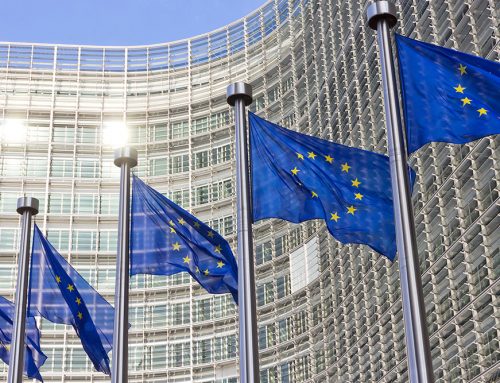The European economy is expected to grow for the seventh year in a row in 2019, with expansion forecast in every Member State. The pace of growth overall is projected to moderate compared to the high rates of recent years and the outlook is subject to large uncertainty.
Valdis Dombrovskis, Vice-President for the Euro and Social Dialogue, also in charge of Financial Stability, Financial Services and Capital Markets Union, said: “All EU countries are expected to continue to grow in 2019, which means more jobs and prosperity. Yet our forecast is revised downwards, in particular for the largest euro area economies. This reflects external factors, such as trade tensions and the slowdown in emerging markets, notably in China. Concerns about the sovereign-bank loop and debt sustainability are resurfacing in some euro area countries. The possibility of a disruptive Brexit creates additional uncertainty. Being aware of these mounting risks is half of the job. The other half is choosing the right mix of policies, such as facilitating investment, redoubling efforts to carry out structural reforms and pursuing prudent fiscal policies.”
Pierre Moscovici, Commissioner for Economic and Financial Affairs, Taxation and Customs, said: “After its 2017 peak, the EU economy’s deceleration is set to continue in 2019, to growth of 1.5%. This slowdown is set to be more pronounced than expected last autumn, especially in the euro area, due to global trade uncertainties and domestic factors in our largest economies. Europe’s economic fundamentals remain solid and we continue to see good news particularly on the jobs front. Growth should rebound gradually in the second half of this year and in 2020.”
Economic growth
Economic activity moderated in the second half of last year as global trade growth slowed, uncertainty sapped confidence and output in some Member States was adversely affected by temporary domestic factors, such as disruptions in car production, social tensions and fiscal policy uncertainty. As a result, gross domestic product (GDP) growth in both the euro area and the EU likely slipped to 1.9% in 2018, down from 2.4% in 2017 (Autumn Forecast: 2.1% for EU28 and euro area).
Economic momentum at the start of this year was subdued, but the fundamentals remain sound. Economic growth will continue, albeit more moderately. The European economy is set to continue to benefit from improving labour market conditions, favourable financing conditions and a slightly expansionary fiscal stance. Euro area GDP is now forecast to grow by 1.3% in 2019 and 1.6% in 2020 (Autumn Forecast: 1.9% in 2019; 1.7% in 2020). The EU GDP growth forecast has also been revised down to 1.5% in 2019 and 1.7% in 2020 (Autumn Forecast: 1.9% in 2019; 1.8% in 2020).
Among the larger Member States, downward revisions for growth in 2019 were sizeable for Germany, Italy, and the Netherlands. Many Member States continue to benefit from robust domestic demand, also supported by EU funds.
Inflation
Consumer price inflation in the euro area fell towards the end of 2018 due to a sharp drop in energy prices and lower food price inflation. Core inflation, which excludes energy and unprocessed food prices, was muted throughout the year, despite faster wage growth. Overall inflation (HICP) averaged 1.7% in 2018, up from 1.5% in 2017. With oil price assumptions for this year and next year now lower than in autumn, euro area inflation is forecast to moderate to 1.4% in 2019 before picking up mildly to 1.5% in 2020. For the EU, inflation is forecast to average 1.6% this year and then pick up to 1.8% in 2020.
Uncertainties
A high level of uncertainty surrounds the economic outlook and the projections are subject to downside risks. Trade tensions, which have been weighing on sentiment for some time, have alleviated somewhat but remain a concern. China’s economy may be slowing more sharply than anticipated and global financial markets and many emerging markets are vulnerable to abrupt changes in risk sentiment and growth expectations. For the EU, the “Brexit” process remains a source of uncertainty.
For the UK, a purely technical assumption for 2019
In the light of the process of withdrawal of the UK from the EU, projections for 2019 and 2020 are based on a purely technical assumption of status quo in terms of trading patterns between the EU27 and the UK. This is for forecasting purposes only and has no bearing on the process underway in the context of Article 50.
Background
This forecast is based on a set of technical assumptions concerning exchange rates, interest rates and commodity prices with a cut-off date of 25 January 2019. For all other incoming data, this forecast takes into consideration information up until 31 January.
The European Commission publishes two comprehensive forecasts (spring and autumn) and two interim forecasts (winter and summer) each year. The interim forecasts cover annual and quarterly GDP and inflation for the current and following year for all Member States and the euro area, as well as EU aggregates.
The European Commission’s next comprehensive forecast will be the Spring 2019 Economic Forecast in May 2019.




